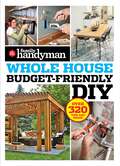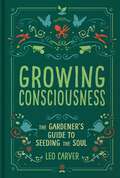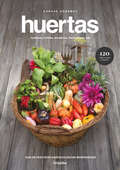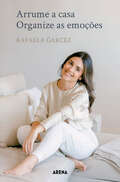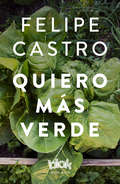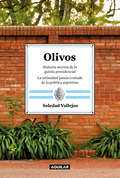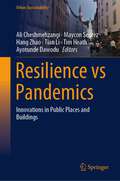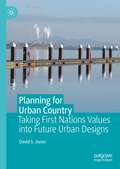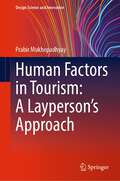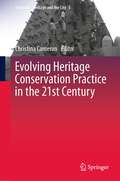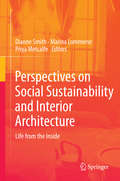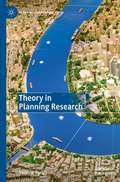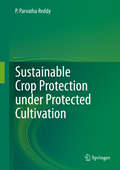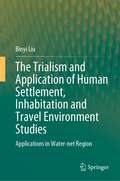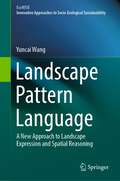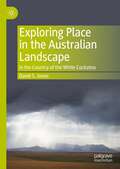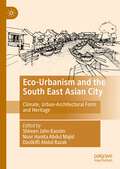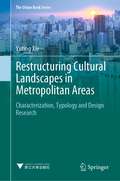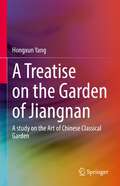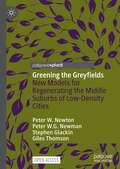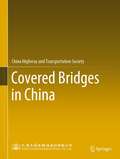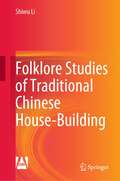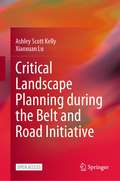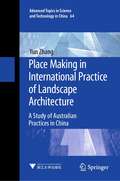- Table View
- List View
Family Handyman Whole House Budget Friendly DIY: Save money, save time, slash household bills. It's easy with help from the pros. (Family Handyman Whole House)
by Family HandymanPacked with the expert, step-by-step guidance from the page of &“Family Handyman&” magazine, Whole House Budget-Friendly DIY will help you save big when it comes to your home.With Family Handyman Whole House Budget-friendly DIY, you&’ll find transformative projects that make every room in your house look like a million bucks. Follow the step-by-step instructions and detailed diagrams as you affordably transform your kitchen counters, build timeless furniture pieces, add elegant trim to walls, update outdoor living spaces and so much more. You&’ll also learn how to make cost-effective repairs to your air conditioner, sprinkler system, toilets and car to avoid pricey service calls. Plus, don&’t miss the bonus chapter that features tips from industry experts on how to slash household bills, including water, electricity and even insurance. Think big and spend small with Whole House Budget-Friendly DIY.
Growing Consciousness: The Gardener's Guide to Seeding the Soul
by Leo CarverGrowing Consciousness explores the links between spirituality and the garden with a focus on Ayurvedic techniques and meditation. Through simple daily meditation practices coupled with gardening, you can marry spiritual growth and plant-based consumption to cultivate a more gratifying existence.This book forges an accessible path to self-discovery and truth; one that can apply to a small herb garden on the windowsill just as well as it would to a Buddhist Zen garden. Growing Consciousness will outline simple practices and explorations into the spiritual qualities of gardening and how one can marry spiritual growth and plant-based consumption to cultivate a more conscious and satisfying existence.
Huertas: Guía de prácticas agroecológicas biointensivas
by Mauricio PizardUn libro con sistemas, técnicas, explicaciones y consejos sencillos para huertos agroecológicos biointensivos: abonos orgánicos, biopreparados, producción sostenible y buenas prácticas. Huertas reúne todos los saberes en torno a la tierra, los jardines comestibles y los distintos cultivos, tanto para quien se inicia como para quien ya tiene conocimientos avanzados. Un libro con sistemas, técnicas, explicaciones y consejos sencillos para huertos agroecológicos biointensivos: abonos orgánicos, biopreparados, producción sostenible y buenas prácticas.
Arrume a casa Organize as emoções
by Rafaela GarcezUm livro que nos ajuda a encontrar o essencial na nossa vida, seja nos objetos, seja nas emoções, através da organização. Este livro tem como objetivo ajudar o leitor a encontrar o seu essencial. Seja nos objetos que tem em casa, alguns dos quais guarda há anos apesar de já não servirem para nada, seja dentro de si. Para Rafaela Garcez, consultora de organização, o que guardamos e mantemos em casa, e forma como o fazemos, está relacionada com a organização das emoções de cada um. Desbloqueando uma casa cheia de tralha, abre-se espaço mental e emocional para o novo, o futuro brilhante e cheio de possibilidades. Ao ajudar-nos a encontrar o nosso essencial no espaço que habitamos, encontramos o essencial dentro de nós. E a partir daí podemos aprender a ser mais livres e leves. Em "Arrume a casa, organize as emoções" a autora apresenta soluções, passo a passo, para todas as áreas da vida: casa, carro, carteira, computador.Sim, ela até ensina a fazer limpeza e organização digital.
Quiero más verde
by Felipe CastroEl planeta quiere más verde y vos podés ser parte: ¡empezá tu propia huerta orgánica! En estas páginas encontrarás todos los pasos, tips y secretos para que puedas armarla, aunque tengas muy poquito espacio. Es hora de poner nuestro granito de arena para salvar a nuestro planeta, y qué mejor que hacerlo trabajando la tierra, aunque sea en un espacio muy chiquito, en unas pocas macetas. No hay nada más satisfactorio que llevar a tu mesa los vegetales que vos sembraste, cuidaste y viste crecer. Además, es una actividad muy relajante que te conecta con la naturaleza. En estas páginas encontrarás todos los datos, tips y secretos para iniciar tu huerta en casa.
Olivos: Historia secreta de la quinta presidencial. La intimidad jamás contada de la política argentina
by Soledad VallejosLa Residencia Presidencial de Olivos, desde su donación hasta la actualidad, ha sido el espacio íntimo del poder en la Argentina. El libro de Soledad Vallejos retrata usos y costumbres de los distintos presidentes y sus familias, de trabajadores, de ocupantes ocasionales y visitantes, a partir de una rigurosa y amplia investigación, y con una prosa ágil y atrapante. La Quinta de Olivos es un lugar del que todos hablan pero pocos conocen. Allí Perón tenía un tigre, y Aramburu, perros que andaban por la casa, cerca de la cual hoy yace, enterrada bajo un árbol, una bóxer llegada de la Patagonia con los Kirchner. Durante los cacerolazos de diciembre de 2001, cientos de desconocidos treparon al muro y amagaron con invadir el predio mientras De la Rúa dormía. En el microcine, Alfonsín vio el partido que consagró a la Argentina en el mundial de México 86, y anunció un cambio de gabinete que haría historia. Cuando la Triple A asolaba las calles, Isabelita exhibió en una cripta los restos de Perón y Evita. La Residencia Presidencial también fue escenario del casamiento elegante de la hija de Illia, la vida familiar de Videla y las leyendas tejidas al calor del menemismo. Pero, ante todo, de la cotidianeidad del poder político, que custodia con discreción lo que pasa tras el muro rojo. Nadie había presentado hasta ahora una investigación similar. Con entrevistas, archivos históricos y recorridos por el lugar, Soledad Vallejos descubre en Olivos las historias secretas de los presidentes que habitaron en la Residencia y de los empleados que velan por ella, para relatar la vida íntima de la política argentina.
Resilience vs Pandemics: Innovations in Public Places and Buildings (Urban Sustainability)
by Ali Cheshmehzangi Maycon Sedrez Hang Zhao Tian Li Tim Heath Ayotunde Dawodu“Resilience vs Pandemics: Innovations in Public Places and Buildings” explores innovative solutions for architecture and public places during and after the pandemic. Additionally, the authors contribute to the documentation of architectural and social transformations that have been prompted by previous transmissible diseases, as this knowledge can inform responses to future pandemics. In this volume, the chapters present critical, exploratory, multi- and interdisciplinary, and cutting-edge research approaches; with a particular focus on the effects of COVID-19 and other highly transmissible diseases on the design, use, performance, and perception of the built environment, particularly at the building scale. This volume aims to organize a collection of scientific studies, reviews, analysis, recommendations, and solutions in the fields of urban design, architecture, design, landscape design, etc. The overarching goal is to document new approaches to create and enhance built environment resilience. Chapters shed light on novel methods, tools, processes, regulations, behaviours, and other relevant details contributing to a comprehensive understanding of this crucial issue. The two scales of the built environment under consideration are: (1) Public Places, including research on transformations (death, emergencies, changes), requirements, adaptability, usability, virtual immersion, historical perspectives, interactivity, shifts in use and programs, etc.(2) Buildings, including regulations, shifts in use and program, non-pharmaceutical interventions, human interactions, and human-machine interfaces. The book covers a wide range of studies, including physical and non-physical studies, which may refer to the city infrastructure, green/blue spaces, housing, policy-making, health services, social and economic issues, etc. The findings and results of various global case study examples contribute to the decision-making of governments, organizations, and institutions, as well as inspire scholars and future research for developing resilience in the post-pandemic era.
Planning for Urban Country: Taking First Nations Values into Future Urban Designs
by David S. JonesPlanning for Urban Country addresses a major gap in knowledge about the translation of Aboriginal values and Country Plans into Australia’s built environment contexts. How do you ‘heal’ Country if it has been devastated by concrete and bitumen, excavations and bulldozing, weeds and introduced plants and animals, and surface, aerial and underground contaminants? How then do Aboriginal values and Country Plan aspirations address urban environments? In this book, David Jones explores the major First Nations-informed design and planning transformations in Djilang / Greater Geelong since 2020. Included are short-interlinked essays about the political and cultural context, profiles of key exemplar architectural, landscape and corridor projects, a deep explanation of the legislative, policy and statutory precedents, opportunities and environment that has enabled these opportunities, and the how Wadawurrung past-present-future values have been scaffolded into these changes.
Human Factors in Tourism: A Layperson's Approach (Design Science and Innovation)
by Prabir MukhopadhyayThe textbook covers the application of human factors in different facets of tourism and hospitality industry. It talks about appropriate ambience creation for guests, so they can enjoy their stay. This book enumerates different human factors aspects of dealing with tourists, conducting guided tours, or ensuring that tourists are completely satisfied from the tour in detail but in a layperson’s language. This book discusses details of the application of human factors in the tourism sector. This book aims to fill the gap between the literature available on tourism that deals with people and human factors that deals with the interaction among people, space, and products. This book aids the students and instructors in understanding and teaching different human factors issues in this sector. Further, this book will help professionals in the industry in providing quality services to their clients.
Sustainable Urban Development in Singapore: Imagining Walkability in an Urban Concrete Jungle (Sustainable Development Goals Series)
by Melissa Liow Li Sa Sam Choon-YinThis book offers theoretical and practical insights into land use, transport, and national policies in one of world’s well-known urban concrete jungle, none other than the Singapore city. The emphasis is situated on Singapore’s attempt to promote walking and cycling. Greater appreciation of walkability thrives on Singapore’s rich history, green city, people and the gastronomic kopitiam and hawker culture. The book offers a comprehensive coverage of walkability as a crucial component of urban design to reduce vehicular congestion with the associated carbon emissions, foster a healthy lifestyle and community participation and create jobs to help the economy. A high income per capita and an aging society, lessons drawn from Singapore’s experience will be useful to other societies. Scholars in sustainable tourism field, urban planners, government bodies, tourist boards, entrepreneurs, national parks board, residents, and inbound travellers will benefit from reading the book.
Evolving Heritage Conservation Practice in the 21st Century (Creativity, Heritage and the City #5)
by Christina CameronThis book focuses on current trends in cultural heritage conservation and their influence on heritage practice. Seen through the lenses of World Heritage, historic urban landscapes, heritage tourism, climate change or the nature/culture nexus, these challenges call for innovative approaches to protect and conserve our heritage places. The book brings together the voices of different stakeholders in the heritage conservation process, ranging from scholars, site managers and government officials to young professionals and students.
Perspectives on Social Sustainability and Interior Architecture
by Dianne Smith Marina Lommerse Priya MetcalfeThis book argues that interior architects have a responsibility to practice their profession in collaborative ways that address the needs of communities and of to be the agents of social justice and cultural heritage. The book is divided into three sections, based on three pivotal themes -- community engagement, social justice and cultural heritage. Each section has chapters that put forward the principles of these themes, leading into a variety of fascinating case studies that illustrate how socially sustainable design is implemented in diverse communities across the world. The second section includes four concise case studies of community housing issues, including remote-area indigenous housing and housing for the homeless. The third section offers two extensively researched essays on design and cultural heritage -- a case study of the development of a redundant industrial site and a historical study of gendered domestic interiors. The book appeals to a wider audience than the design community alone and challenges mainstream interior design/interior architecture practitioners nationally and internationally to take a leading role in the field of socially responsible design. The issues raised by the authors are relevant for individuals, communities, government and non-government organisations, professionals and students. "In the twenty-first century we seem to have entered into a new world of knowledge discovery, where many of the most exciting insights come not from the authority of a traditional discipline, but from the dialogue that happens at the hubs and intersections of thought -- the arenas where different disciplines and approaches, different schools and habits of thinking, come together to collaborate and contend. This collection is a good example of this, and I hope the book will be widely read and its lessons learned and applied. " Tim Costello, Officer of the Order of Australia, Chief Executive, World Vision Australia.
Theory in Planning Research (Planning, Environment, Cities)
by Yvonne RydinDoing research is an essential element of almost all programmes in planning studies as well as related areas such as geography and urban studies, from undergraduate, through Masters to doctoral programmes. While most texts on such research emphasise methodologies, this book is unique in addressing how theoretical frameworks and perspectives can inform research activity. Providing both a concise introduction to a wide range of such theories and detailed engagement with cases of planning research, it provides the reader with the insights necessary to conduct theory-informed research. It offers an understanding of how the choice of a theoretical framework has implications for the focus of the research, the precise research questions addressed and the methodologies that will be most effective in answering those questions. Through practical advice and published examples it will support planning researchers in doing stronger, more widely-applicable research, which answers key questions about planning systems and their role within our societies.
Sustainable Crop Protection under Protected Cultivation
by P. Parvatha ReddyThis book focuses on pests (insect and mite) and diseases (fungal, bacterial, viral and nematode) in protected horticulture (fruits, vegetables and ornamentals) using physical, cultural, chemical, biological, host resistance, and integrated methods. It opens with chapters describing the setting in which integrated pest and disease control operates, i. e. , the greenhouse and its environment. Subsequent chapters present the basic strategies and tactics of different control methods including integrated control, with special reference to greenhouse crops. Further chapters include the different facets of biological pest and disease control - its scientific bases, its development in practice, its commercialization and quality control. The concluding chapters of the book highlight the present status of integrated pest and disease control for the most important greenhouse crops (fruits, vegetables and flower crops) worldwide. The book's final chapter explores future challenges for researchers assigned to identify non-pesticide methods and integrate sustainable pest management technologies that can contribute to increased productivity, such as breeding for durable resistance, biological control and devising integrated methods that will have minimal adverse environmental and social impacts. Among productivity-enhancing technologies, protected cultivation has a tremendous potential to increase the yield of vegetables and flower cro ps by several fold. Pests and diseases are one of the major challenges to protected cultivation. Year-round warm temperatures and relatively high humidity together with abundant food make the protected environment of greenhouses highly attractive to pests and diseases. Nevertheless, very little attention has been paid to the manipulation of greenhouse environments expressly to avoid disease epidemics and insect infestations, which together can easily account for 30% of crop losses. This book will be of immense value to all members of the scientific community involved in teaching, research and extension activities on protected horticulture. It also offers a useful reference guide for policymakers and practicing farmers, and can be used as a textbook for postgraduate courses.
The Trialism and Application of Human Settlement, Inhabitation and Travel Environment Studies: Applications in Water-net Region
by Binyi LiuThis book studies human settlements in China in terms of Human Settlements Trialism in 5 typical human settlement types: river valleys, water networks, hills, plains, and arid areas. Focusing on 3 elements of Trialism—(1) natural and constructed environments, resources, and visual landscapes in human settlements background; (2) survival strategies, customs, culture, and values in human settlements activity; and (3) the layout of time and space as well as the planning and design of the urban, the country, and the wilderness in human settlements construction—the book analyzes the evolution of human settlements and predicts future trends. Presenting academic researchers and graduate students in various fields with insights from landscape architecture, urban planning, architecture, geography, forestry, art, and psychology, the study discusses the principles of interactive physiological thinking and systematically theoretical philosophy related to professional physiology, planning and design principles, and traditional and modern methods and technologies in urban and rural construction. The innovative multi-discipline study promotes the planning and design of 5 types of human settlement, which is helpful to the judgment of value, activity rule, and living style of human settlements, and also discusses the development of human settlements in the new millennium.
Landscape Pattern Language: A New Approach to Landscape Expression and Spatial Reasoning (EcoWISE)
by Yuncai WangThis book presents a landscape pattern language framework for describing landscape spaces and offers a new approach to landscape expression and spatial reasoning. In addition to describing a conceptual model of landscape pattern language and its inner logical connections, the book discusses the functionality of landscape pattern language from both local and universal perspectives—effectively demonstrating that it can be used to highlight the individuality and characteristics of landscape space shaping. Given its scope, the book offers a valuable resource for all graduate students, lecturers, researchers, and practitioners in the areas of landscape architecture, landscape planning, and regional planning, especially ecological planning and design.
Exploring Place in the Australian Landscape: In the Country of the White Cockatoo
by David S. JonesIncluded is a deep ethno-ecological and cross-cultural translation, that takes the reader through both the Western understanding of sense of place as well as the Australian Aboriginal understanding of Country. Both are different intellectual constructions of thoughts, values and ideologies, but which share numerous commonalities due to their archetypal meanings, feelings and values transmitted to humans.
Eco-Urbanism and the South East Asian City: Climate, Urban-Architectural Form and Heritage
by Shireen Jahn Kassim Noor Hanita Abdul Majid Dzulkifli Abdul RazakThis book traces the history of urban design in tropical South East Asia with a view to offering solutions to contemporary architectural and urban problems. The book examines how pre-colonial forms and patterns from South East Asian traditional cities, overlaid by centuries of change, recall present notions of ecological and organic urbanism. These may look disorganised, yet they reflect and suggest certain common patterns that inform eco-urban design paradigms for the development of future cities.Taking a thematic approach, the book examines how such historical findings, debates and discussions can assist designers and policy makers to interpret and then instil identities in urban design across the Asian region. The book weaves a discourse across planning, urban design, architecture and ornamentation dimensions to reconstruct forgotten forms that align with the climate of place and resynchronise with the natural world, unearthing an ecologically benign urbanism that can inform the future.Written in an accessible style, this book will be an invaluable reference for researchers and students within the fields of cultural geography, urban studies and architecture.
Restructuring Cultural Landscapes in Metropolitan Areas: Characterization, Typology and Design Research (The Urban Book Series)
by Yuting XieThis book introduces a ten-year-long design research project in the Yangtze River Delta (YRD), China, based on international cooperation studios, design workshops, a Ph.D. thesis, and concrete practice in China, Germany, and the Netherlands. This research adapts the existing methods of Landscape Character Assessment (UK), Historic Cultural Landscape Elements (Germany), and Dutch Polder Typology to mapping, describing, and classifying landscape character areas and types at the three scales of regional, municipal, and local. Furthermore, to connect research with design, we developed a typological approach of generating specific measures for the networked polder landscape. This research bridges the gap of a missing landscape characterization method for the conservation, transformation, and critical reconstruction of historic cultural landscapes in a metropolitan context. The book is intended for graduate students, researchers, and practitioners interested in the topics of cultural landscape in transition, methods for landscape characterization and typology, and a research-by-design approach in interdisciplinary projects of landscape architecture, urbanism, and regional planning.
A Treatise on the Garden of Jiangnan: A study on the Art of Chinese Classical Garden
by Hongxun YangThis book presents a study into the art of Jiangnan classical garden. Jiangnan (“the south of the Yangtze River”) refers to the water network region along the lower reaches of the Changjiang River (formerly known as Yangtze River), where Jiangsu Province Chinese gardens were primarily constructed during the 16th and 17th centuries of the later Ming and early Qing dynasties. The Jiangnan garden, an architectural space where artificial and natural elements are combined, represents the elite of classical Chinese gardens and serves as a prime exemplar for its northern counterpart, the Ming and Qing imperial gardens.The book pursues an interdisciplinary approach, combining historical information with case studies and other methods. Charts and pictures are used to supplement and reinforce the conclusions drawn from the macro narrative, enhancing the authenticity and readability of the historical monographs. It represents the first study of the classical art of landscape design in China, offering readers an insightful introduction.
Greening the Greyfields: New Models for Regenerating the Middle Suburbs of Low-Density Cities
by Peter W. Newton Peter W.G. Newman Stephen Glackin Giles ThomsonThis open access book outlines new concepts, development models, governance and implementation processes capable of addressing the challenges of transformative urban regeneration of cities at precinct scale.
Covered Bridges in China
by China Highway &Transportation SocietyThis book is the first comprehensive work on Chinese covered bridges study, covering fields of human geography, historical buildings, and transportation. It includes more than 300 covered bridges of ancient and modern China, researching and analyzing their historical evolutions, architectural technologies and aesthetic values. And it, for the first time, divides Chinese covered bridges into “six covered bridge belts” and fills the academic gaps. This book presents an informative and splendid tour into covered bridges, illustrated and full of humanist consciousness. It targets on audience who works in transportation, human geography, historical buildings and Chinese traditional culture with its significant value both in academy and art.
Folklore Studies of Traditional Chinese House-Building
by Shiwu LiThis book provides extensive information on craftsmen-built houses in China. Though some inroads have been made in studying this folk custom, this work represents the first comprehensive and systematic monograph. The book examines the topic at the two main levels of “history” and “theory”. Combining historical textual research, contemporary textual research, and field study, the book presents systematic information on the folk custom of craftsmen-built houses in China. At the level of theoretical research, it puts forward some original opinions on the major theoretical issues, such as the folk custom of religious belief, the boundary between superstition and religion, and the relationship between oral literature and ritual. The book provides a guide to help readers systematically understand the folk custom of craftsmen-built houses in China. Sharing valuable insights into Chinese architectural history, as well as religious studies, cultural anthropology, and folklore, it will appeal to researchers in the fields of folklore, cultural anthropology, and architecture and can also serve as a popular science book for understanding Chinese architectural culture.
Critical Landscape Planning during the Belt and Road Initiative
by Ashley Scott Kelly Xiaoxuan LuThis open access book traces the development of landscapes along the 414-kilometer China–Laos Railway, one of the first infrastructure projects implemented under China’s Belt and Road Initiative (BRI) and which is due for completion at the end of 2021. Written from the perspective of landscape architecture and intended for planners and related professionals engaged in the development and conservation of these landscapes, this book provides history, planning pedagogy and interdisciplinary framing for working alongside the often-opaque planning, design and implementation processes of large-scale infrastructure. It complicates simplistic notions of development and urbanization frequently reproduced in the Laos–China frontier region. Many of the projects and sites investigated in this book are recent “firsts” in Laos: Laos’s first wildlife sanctuary for trafficked endangered species, its first botanical garden and its first planting plan for a community forest. Most often the agents and accomplices of neoliberal development, the planning and design professions, including landscape architecture, have little dialogue with either the mainstream natural sciences or critical social sciences that form the discourse of projects in Laos and comparable contexts. Covering diverse conceptions and issues of development, including cultural and scientific knowledge exchanges between Laos and China, nature tourism, connectivity and new town planning, this book also features nine planning proposals for Laos generated through this research initiative since the railway's groundbreaking in 2016. Each proposal promotes a wider "landscape approach" to development and deploys landscape architecture’s spatial and ecological acumen to synthesize critical development studies with the planner's capacity, if not naive predilection, to intervene on the ground. Ultimately, this book advocates the cautious engagement of the professionally oriented built-environment disciplines, such as regional planning, civil engineering and landscape architecture, with the landscapes of development institutions and environmental NGOs.
Place Making in International Practice of Landscape Architecture: A Study of Australian Practices in China (Advanced Topics in Science and Technology in China #64)
by Yun ZhangThis book explores international practice in landscape architecture, focusing on the provision of services from Australia to China during China’s contemporary urbanization and Australian landscape architects’ approaches to place. Landscape architectural practice requires planners and designers to have a deep understanding of local culture, site characteristics, craftsmanship and even project procedures that are often intangible. How to acquire the above local knowledge has become a major challenge for international teams. Through the survey of the practice of Australian landscape practices in China and the case study of Li Lake planning and design project, this book reveals the process and difficulties of landscape planning and design as a transnational practice, as well as its special value as a way of cross-cultural fertilization. This book is intended for students, practitioners and researchers in the fields of landscape architecture, architecture and urban planning.
